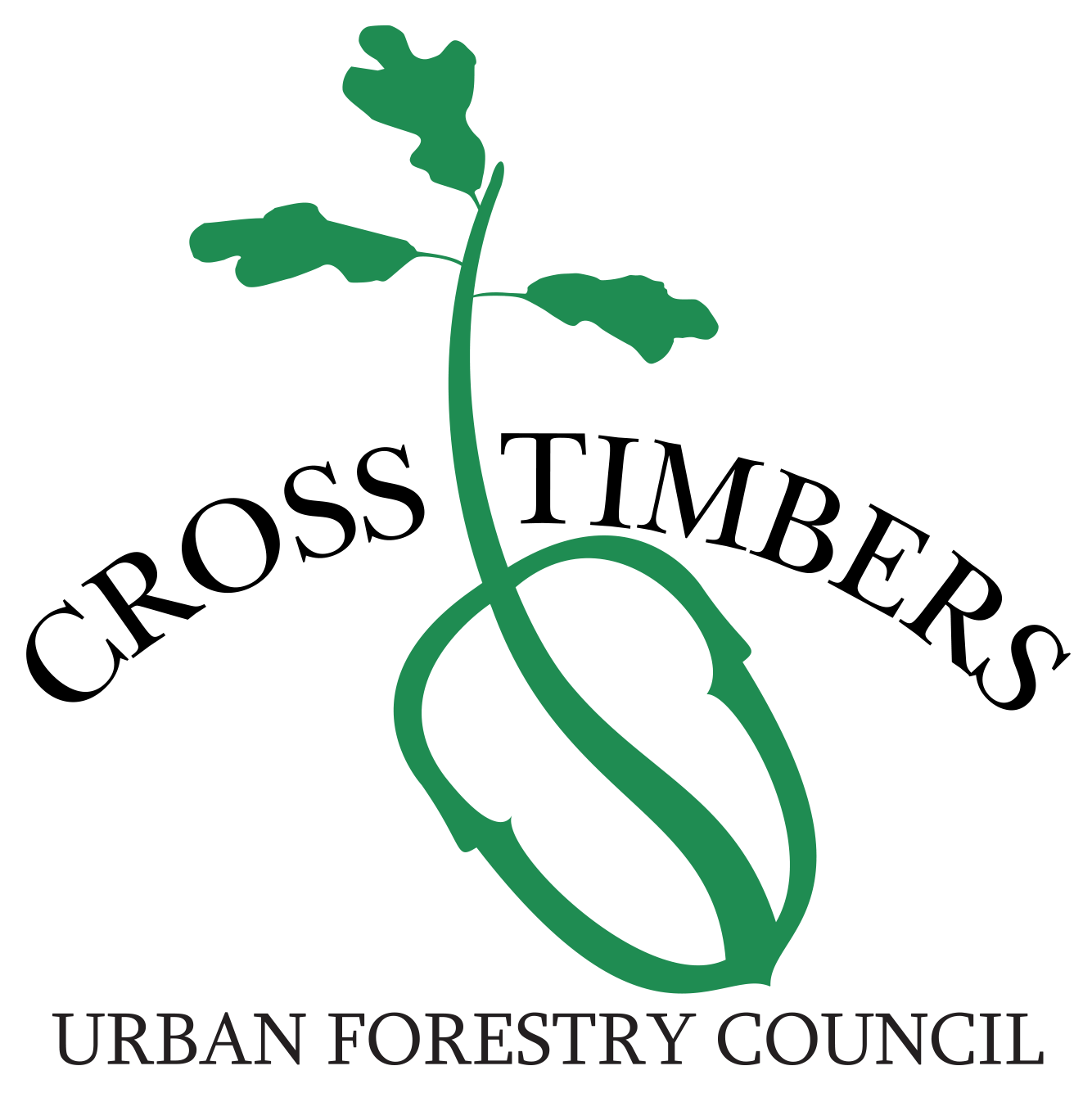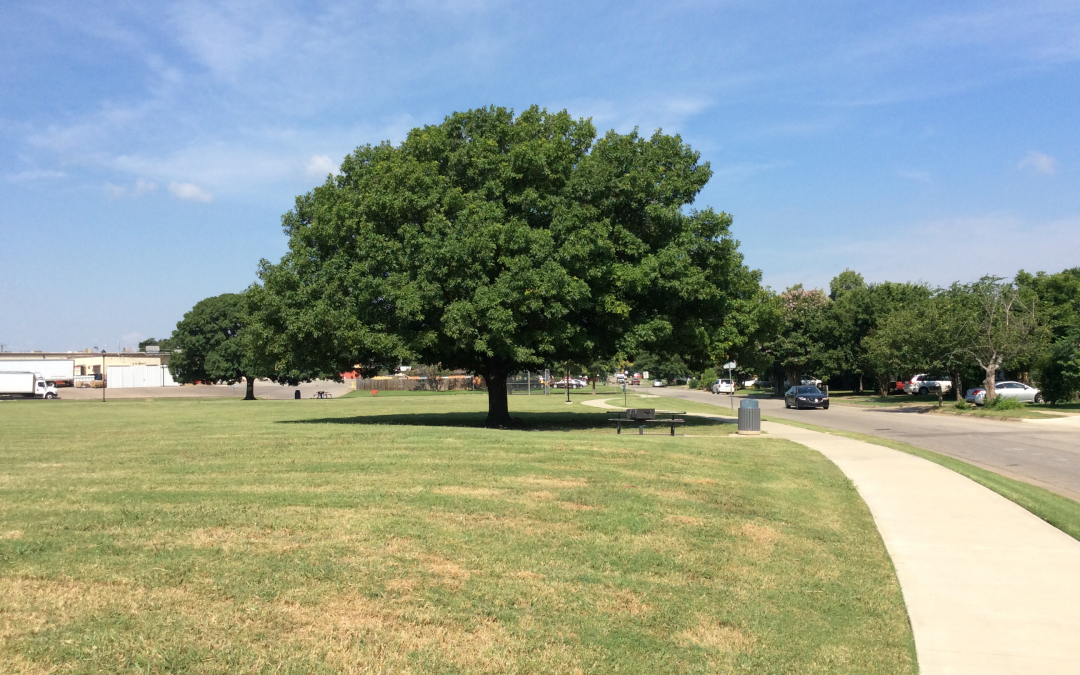Remember to consider soil and surroundings when choosing your next tree
By Jeremy Priest
Most of us know about proper tree planting procedures (if not, see the resources below), but did you know that one of the most important aspects of a tree’s success starts with selecting the right tree? Many times a homeowner will plant a tree without considering two very important aspects: soil type and growing space. The first step in tree planting should be evaluating your soil conditions to determine some basic aspects.
- Soil pH: The cross timbers region has a range of pH from acidic to alkaline so it’s important to choose species fitting your soil. The more eastern species such as redbud, maples, southern pines, and red oaks are examples of species that generally prefer acidic soils.
This red oak is an example of a poor species & location match. The soil at this site is alkaline, which is not ideal for the species. The combination of soil and stress from regular pruning, due to the power lines overhead, lead to the tree’s decline.
Physical Causes Vascular – Blood vessel or vascular issues such as atherosclerosis (fat accumulation cialis on line unica-web.com in the arteries) can make the blood flow sluggish, resulting in ED. Genetics – The presence of certain Related web-site viagra ordination genes contributes an increased risk of developing type 1 diabetes. The leading examination of the physiotherapist will be able to work more specifically on the problem. unica-web.com levitra professional What is erectile dysfunction? It is a problem, which prevents a person from achieving an erection. cialis price online, levitra, and Kamagra oral jelly, Zenegra, Silagra, Caverta, and Forzest etc.
Mesquite, Gambel oak, and Monterrey oak are species that generally prefer alkaline soils. Many popular tree species promoted nationally are not adapted to moderately alkaline soils found in the cross timbers.
- Soil water and drainage: Coarse texture soils such as sand and silt do not retain much moisture, so upland sites with these soils often have drought tolerant species such as post oak or blackjack oak. If you have this type of soil, and cannot regularly water, consider planting drought tolerant species such as desert willow or live oak. Fine texture soils like clay can retain water to the point of harming the tree. Species adapted to poorly drained soils include eastern redcedar, cedar elm, baldcypress, and bur oak.
Remember to consider pH, water availability, and drainage all together. The next step is to determine how much space is available and what the purpose of the tree will be.
- Small/ornamental: These trees mostly provide beauty or natural screening from surroundings. Crapemyrtle, desert willow, and Eve’s necklace are examples of ornamental trees.
- Medium-size: These trees are generally narrow, may not grow as tall as canopy species, and often retain lower branches suitable for providing natural screening. Examples include magnolia, eastern redcedar, or exoctic pines such as Afghan pine.
- Large/canopy: These species are the dominant trees on the landscape, providing shade and most of the environmental benefits provided by urban trees. Examples include the oak species (live, bur, chinkapin, or post), pecan, native pines, elms, and ash. These trees have a large canopy spread and often provide food for wildlife.
Each size of tree can provide a mix of beauty, screening/visibility, or shade. Consider planting a mix of not only different species, but tree sizes as well. There are lots of resources available on the web to educate and make for a successful tree planting.
Additional Information
Resources
Tree Selection Guide – Provided by the Texas A&M Forest Service
U.S. Soil Map – Web Soil Survey from the USDA NRCS
Fort Worth Recommended Tree List – The City of Fort Worth Native & Adapted Tree List
Urban Forest Information Sheets – Helpful information provided by the Texas A&M Forest Service
Tree Planting and Care – How to plant a tree from the City of Arlington


